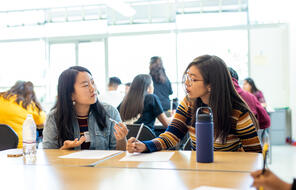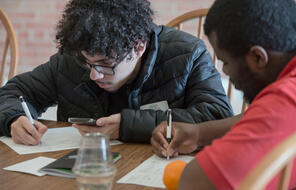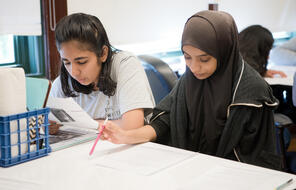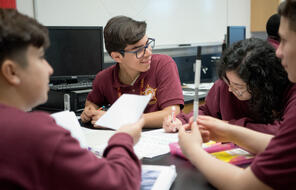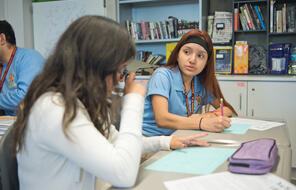
Redefining Home
Duration
Two 50-min class periodsSubject
- English & Language Arts
Grade
11–12Language
English — USPublished
Get it in Google Drive!
Get everything you need including content from this page
Get it in Google Drive!
Get everything you need including content from this page
Overview
About This Lesson
Older adolescents are often asked, “What will you do after you graduate?” or “Where will you go after high school?” The unconscious implication here is that students have already reflected on who they are, where they come from, and how their values and beliefs can inform or hinder decision-making about the future. While the questions are important, students also need time and resources to contemplate and discuss the type of world they want to cultivate for themselves and others. It is especially important for a generation of students experiencing rapid social, cultural, political, environmental, and technological changes to explore how their evolving identity along with shifting values and beliefs will contribute to their future relationship with themselves, others, and the world.
Through an examination of the poems “The Singularity” and “Meteor Shower,” students are encouraged to consider how their backgrounds shape their present selves and future paths. A final discussion serves as a culminating activity that reflects on the unit’s overall theme and essential question.
Lesson Materials
- Reading: “The Singularity” by Marie Howe
- Audio: “The Singularity” by Marie Howe
- Handout: “Meteor Shower” Reading and Reflections
- Handout: Exploring Texts through Notable Quotes
Essential Questions
- How can reimagining “home” empower us to define how and where we belong in the world?
Guiding Questions
- In what ways can home exist without boundaries?
- How might your history and origins have a lasting impact on your identity?
Facing History Learning Outcomes
- Describe the factors that influence their moral development, such as their personal experiences, their interactions with others, and their surroundings, and reflect on how these factors influence their sense of right and wrong.
- Develop the tools, efficacy, and voice to envision and enact positive changes in their personal lives, communities, and world.
Lesson Plans
Day 1 Activities
Day 2 Activities
Extension Activities
Unlimited Access to Learning. More Added Every Month.
Facing History & Ourselves is designed for educators who want to help students explore identity, think critically, grow emotionally, act ethically, and participate in civic life. It’s hard work, so we’ve developed some go-to professional learning opportunities to help you along the way.
Exploring ELA Text Selection with Julia Torres
On-Demand

Working for Justice, Equity and Civic Agency in Our Schools: A Conversation with Clint Smith
On-Demand

Centering Student Voices to Build Community and Agency
On-Demand






